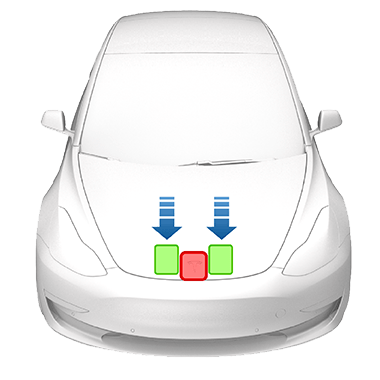SuperPigDots
Member
Well... this is the Model 3 section and a Model 3 post to be specific...Frunk denting is a real thing and was a major issue with the Model S. That's when Tesla gave guidelines to reduce the chances of doing it (guidelines that continue to exist in the Model 3 manual, as another pointed out).
Frunk Dent (Frustrating...)
That said, the prevalence of this for the Model 3 seems to be much less, as it appears to be beefed up.
There are however cases for Model Y where the hood bumpers are not adjusted properly and when the latch is engaged, it pulls down too much and causes two very visible dents (although they pop back out when hood is open).
PSA - small dents on all brand new Model Y hoods
And again, the reason for the denting is what I am getting at most here. Do the dents come from us cautious people on this forum, thinking about and learning about their vehicle and its limitations? Or do they come from Joe Shmoe who didn't think twice, treated their Tesla like they've treated their last 5 used-and-abused traditional combustion vehicles, and slammed their hood down with the force of Thor's Hammer? Also, I suspect the same people would be inclined to hop on a forum like this one and fabricate sympathy for their own gain (hoping for a complimentary Tesla service repair, social validation, or whatever else) by claiming they don't know what happened; they were just closing it like the manual said to. They say that online feedback often attracts the loudest cases and not the 1,000s more of median cases.
I suspect that hood dents are a rare case that are mostly due to user complacency/error and, in even rarer cases, defective hood alignments. Like you said, Tesla has seemed to have learned about frunk hood fragility, and I theorize that us cautious frunk users have nothing to worry about.



